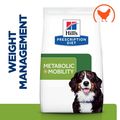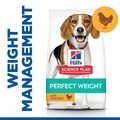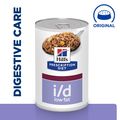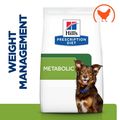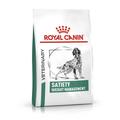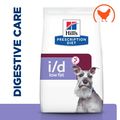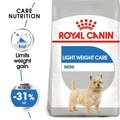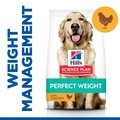How do I know if my dog is overweight?
Letting your dog become overweight can cause considerable health problems and a shorter life span, with conditions such as a heart disease, arthritis, circulatory problems, pancreatic disorders and liver disease being more prevalent in overweight animals. If you cannot feel your dog’s ribs when you run your hand along its side, your dog is overweight. Another good way of judging is whether your dog has a waist; if there isn't a waist, your dog is overweight.
What’s the next step?
A veterinary visit is crucial once you have decided your dog is overweight as they can tell you if there are any other underlying causes of the weight gain. Your vet can also make you a tailored plan to suit both you and your dog with realistic weight loss goals. Is it important that you don't try to lose too much weight too quickly as this would increase the likelihood of the weight going straight back on after the programme. A reasonable target would be to lose between 1 and 2% of the dog’s body weight a week as long as you are strict - this is for your dog's health after all.
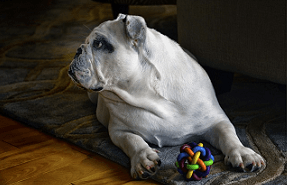 You must be careful when bringing more exercise into your dog's weight reduction plan as it can cause too much strain on their muscles, joints, heart and respiratory system if you start too heavily. Begin by leash walking for between 20-60 minutes five times a week but be aware of heavy panting as this is a sign of fatigue and you must stop to rest.
You must be careful when bringing more exercise into your dog's weight reduction plan as it can cause too much strain on their muscles, joints, heart and respiratory system if you start too heavily. Begin by leash walking for between 20-60 minutes five times a week but be aware of heavy panting as this is a sign of fatigue and you must stop to rest.
Swimming doesn't cause as much strain on the joints and is also fantastic exercise for overweight and obese dogs. When you and your dog are comfortable with this amount of exercise you can increase it slowly but, again, be careful to monitor your dog's condition.
How do I help my dog keep the weight off?
Generally, a dog who doesn't achieve its weight loss target is not at fault; rather, it is the owner who can't resist a dog's begging. You must be strict with your weight loss programme. Table scraps must be eliminated and treats should be minimised to no more than 10% of your dog's daily intake. There are several other ways to reward your companion such as new toys, grooming or regular exercise as they increase your dog’s mental stimulation and ultimately stop them thinking about food so much!
Cutting calories is usually the easiest weight reduction method and can be done in a few different ways. You could simply cut down the quantity of food you are feeding your dog by 20 to 40% and evaluate every 3 to 4 weeks to decide if further reductions are necessary.
Another option is to switch to special weight reduction foods such as Purina Veterinary Diet OM and Royal Canin Obesity Management which are specifically designed for weight reduction in dogs. Using specially designed foods generally allows you to feed your dog the usual amount of food (unless you are over-feeding them with large portions) as they have a reduced fat and calorie content. They also contain the correct nutrients, fatty acids (for a healthy skin and coat), vitamins and minerals that your dog needs to stay healthy, alert and active while doing more exercise.
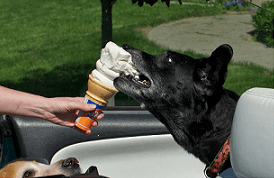 General feeding rules while on a weight reduction diet are to feed your dog separately from any other pets so that there is no temptation for them to steal extra food, feed them more often (e.g. between 2 and 4 smaller meals a day as opposed to 1 or 2 bigger portions) and feed them before you make a meal for yourself as it will decrease begging and therefore won't tempt you to give them extra food either.
General feeding rules while on a weight reduction diet are to feed your dog separately from any other pets so that there is no temptation for them to steal extra food, feed them more often (e.g. between 2 and 4 smaller meals a day as opposed to 1 or 2 bigger portions) and feed them before you make a meal for yourself as it will decrease begging and therefore won't tempt you to give them extra food either.
Monitoring your dog's progress is essential and also easy. Keep a log of your dog's food intake, ensuring you are honest and update a graph of their weight every week, taking photos and visiting your vet every 2 to 4 weeks. Doing these things will help determine how your dog is progressing and which activities, food portions or formula is helping the most. You can read the full version of this article in our Knowledge Base.
If you have any advice on supporting weight loss and helping your dog maintain a healthy weight, please share it with our other readers! Alternatively, email me directly or post your comments below: [email protected]
Written by: Dr. John Cousins BVSc MRCVS


